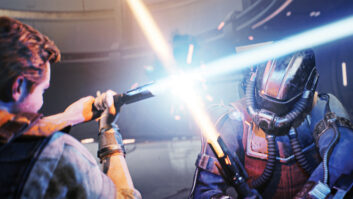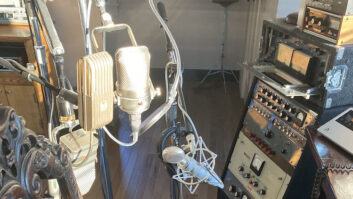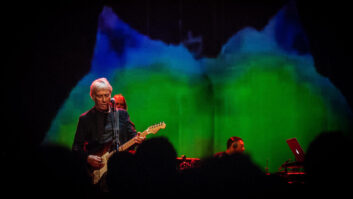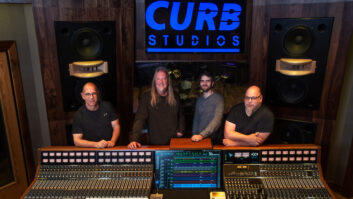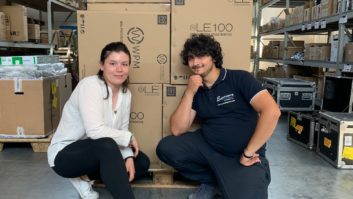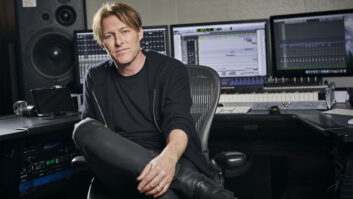Obviously, a lot has changed in the past 25 years, both in terms of the equipment we use and the way we work. I still love to get in there and work with live musicians: I still record a lot of rhythm section dates, I still overdub horns and strings, and sometimes I even do risky things like record a full orchestra in a room! What I miss most from 25 years ago is that camaraderie you enjoyed when you knew the band was going to show up at two or three in the afternoon and we’d work for six or eight hours every day for a couple of weeks, really getting everything down together as a group. That still happens occasionally, but not as much as I’d like. Now, of course, you have more situations where musicians are creating the foundations of their songs with computers and sequencers, and it is a good way of working, but it changes the recording experience. Even there, I’d say if you’ve created a track with machines and you overdub it with people, it’s still better to overdub it with two or three people at a time, because chemistry is so important; it’s something you can hear on the track.
Technologically, the big argument came when people started wondering whether the sound of digital would ever replace the warmth of analog, and 25 years later, the same argument exists; the controversy continues. I’m one of those guys who is always trying to move forward and who has taken chances on new devices — I feel you can’t look back and be too sentimental about the way things were, because things can always be improved. Still, it’s good to keep track of what’s done well and what hasn’t; not every development has been a good one. Many of us have used analog and digital together, taking from the best of both worlds.
Digital definitely became more interesting with 24-bit. I think in the early days of digital, particularly with vocals, the lack of bits really hurt a lot of projects. It didn’t matter if you had a $10,000 microphone if you had a lack of bits; it just wouldn’t sound right. So that has gotten a lot better, but it doesn’t change the fact that you still have to know how to record a vocal. Good equipment will not overcome bad mic technique.
I’ve noticed that, with the dominance of hard disk recording the past few years, many engineers are now more involved with the computer screen than with the action in the room, and that’s not a good thing. I think it’s important for the engineer to really listen to what’s going down — to stay in touch with what’s happening in the room instead of just looking at waveforms. I’ve found that you can usually put an assistant on to look at the screens for you. Obviously, the person running it has to be more than what an assistant was five or 10 years ago, but it really does help the engineer to have a competent co-pilot.
So, with the new systems, there’s been a lot of trial and error and a lot of discovery. But, in general, I think life has become tons easier because of the advances. Look at how ISDN and EDNET have allowed us to work on a project in different cities. About the only thing that hasn’t become easier is how to store the final master, which is a key point in our work — if you make a great recording, how do you preserve it? Personally, I still always like to have some sort of analog master, even if I’m also going to have one on optical or some other digital medium. Because, at this point, we still don’t know enough about the digital masters — whether they’re going to sound the same in 10 or 15 years, let alone 25 or 50 or 75 years. One thing we know about analog tape is that we can still pull off the sound intact in 25 or 30 years, even though, in some cases, the tape and the backing have deteriorated. I’m hopeful that we can come up with something we can all agree on, because we want to be able to preserve this music forever.
These days, there’s also a lot of talk about high-definition sound, and from my point of view, it’s here, and over the next 10 years, there will be nothing but improvements. One thing we’ve learned in the film world is that an audience will come because it sounds better and looks better. That’s been proven at home, too: The DVD-Video is an accepted format. With DVD-Audio, it has been a little trickier because of the problem of standardization. The public doesn’t want to go through another fight like the Beta-VHS fight. For that matter, they don’t want to have to think about 24/96 vs. 24/44.1. And the manufacturers are caught in the middle of these battles, too. So, we have all these new technologies competing for a public that is confused, and meanwhile, we’re all still sitting around the table arguing. We need common tools. We need to be able to work these things out. Fortunately, for the first time, engineers and producers are working more as a unit with the manufacturers. And if the manufacturers listen to us, it will be a home run and we all win. Everybody should be hooked up together, visually and aurally — it’s the only way to go.
The legendary Phil Ramone is in his fifth decade as one of the industry’s top producers and great technical minds. Recently, he has been working in London on a project with Rod Stewart.

